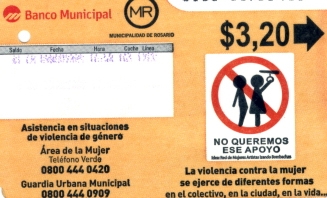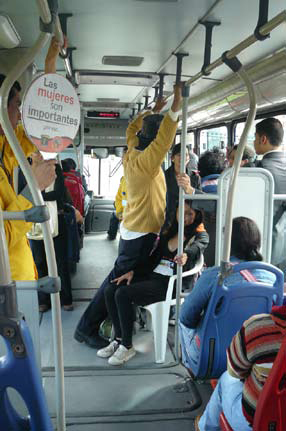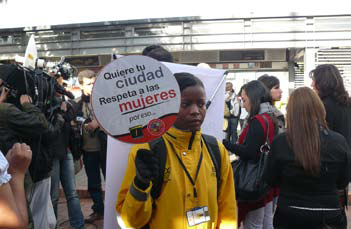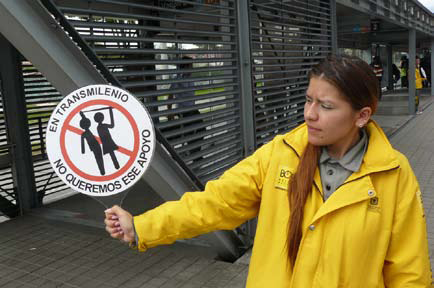A communications strategy is a plan that safe cities for women programme partners develop in order to decide on what they want to communicate, and how they want to communicate it. Any communications strategy should involve a definition of what safe cities for women is and is not, as well as a clear understanding of why the safe cities for women concept is important to the community. A communications strategy should also include information on the type of research that will be required, the type of communication materials that will be produced, the responsibilities and deadlines associated with different products (posters, television advertisements, etc.); and the budget that will be involved (UNIFEM, 2003, pages 33-4).
Example The Egyptian Center for Women's Rights Campaign Against Sexual Harassment Fact Sheet (n.d.). This fact sheet on a campaign against sexual harassment in Cairo, Egypt, demonstrates how research, public awareness, advocacy and outreach activities can be combined into a large-scale initiative that raises awareness about issues of women's safety among multiple levels of urban actors. Available in English. [Link to PDF file - ECRW Harassment Campaign Fact Sheet.pdf]
Create a safe cities for women programme logo and message that is simple and easily recognizable.
When the design and messaging is complete, then apply it to all the material that is produced and distributed. The logo could include symbols for women, for cities, or for the community. Remember to include the name of the initiative.
Examples of logos and messages: Femmes et Villes, Ville de Montreal (Women and the City, City of Montreal) Logo, Montreal, Canada. Image Source: City of Montreal. Regional Programme “Cities without Violence against Women, Safe Cities for All” Logo. Image Source: Red Mujer y Habitat de America Latina.
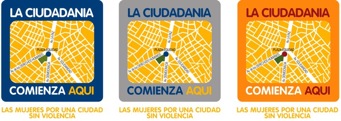



Repeat your message.
Create an image that conveys the message of safe cities for women and disseminate it across the community until it becomes commonplace. You can use the image in posters, on billboards, on web sites, printed on placemats in restaurants, on bumper stickers – wherever people in the city will see it.
Example of repeated messaging: Safer cities for women bus tickets, Rosario, Argentina. In 2008, 75 000 bus tickets were printed in Rosario with messages that raised awareness about violence against women in cities, and particularly on public transit. The city’s Municipal Urban Guard worked in partnership with the Municipality of Rosario to undertake this initiative, demonstrating effective institutional support from multiple partners. These bus tickets were created as part of the Regional Programme ”Cities without Violence against Women, Safe Cities for All.” Transmilenio awareness raising campaign in Bogota, Colombia. In 2008, during the two weeks leading up to November 25 (International Day for the Elimination of Violence against Women), several events were held to raise awareness about women’s safety throughout Bogota’s transit system, Trasmilenio. As part of the events, handheld signs and posters were produced to communicate the message that violence against women is socially unacceptable in public transportation in Bogota. Women held these signs throughout the transit system so that passengers repeatedly encountered the message both while using and while waiting for public transit. The campaign was developed under the UNIFEM-supported Regional Programme “Cities without Violence against Women, Safe Cities for All.” Image source: Red Mujer y Habitat Latinoamerica. 